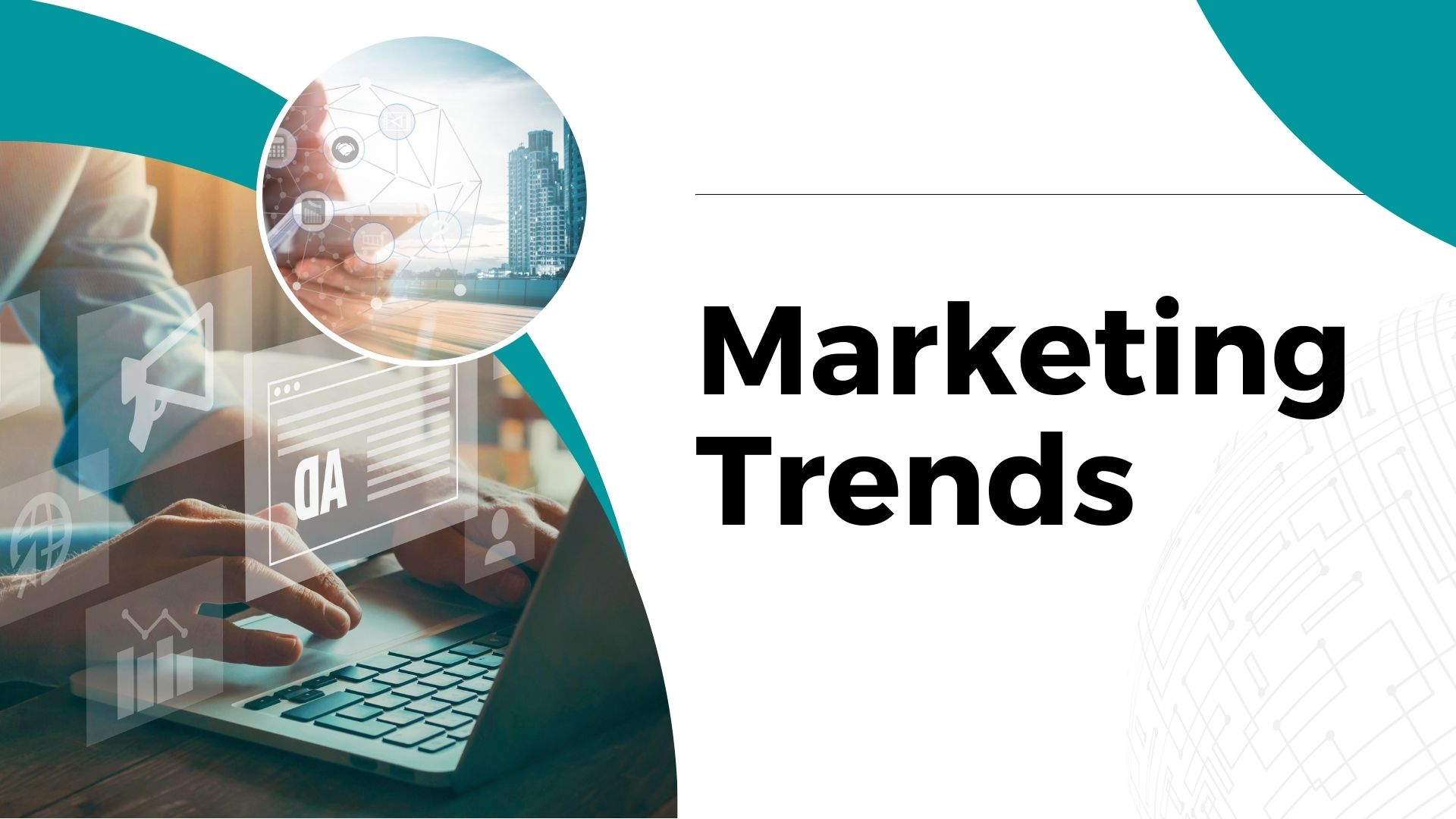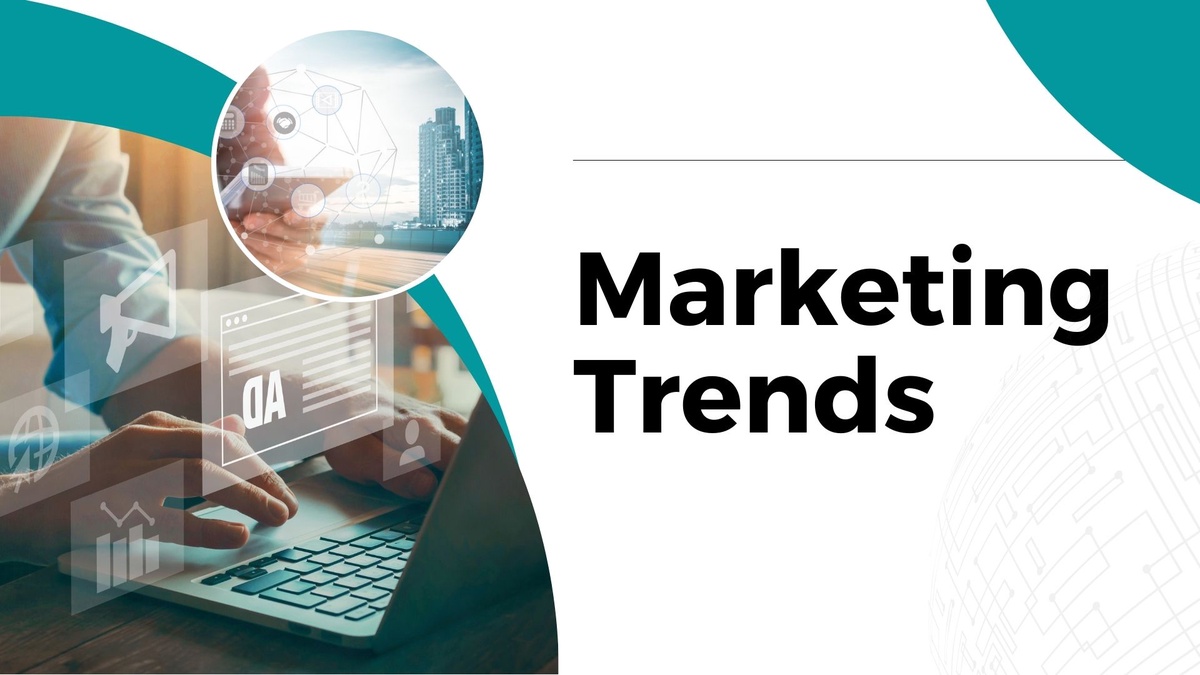The year 2022 was marked by nostalgia, trust, humanization, and participation in marketing. As we approach 2023, it is a good time to seek advice from marketing experts to predict the 11 trends that should be incorporated into your marketing strategy.

1. Inclusive marketing
The Deloitte report that inspired this article highlights the younger generation's expectation for brands to promote diversity and inclusion, both on and off the camera. As your target audience evolves, it now comprises individuals from various backgrounds, genders, and sexual orientations. To build a strong and enduring bond with customers, brands must ensure that their marketing messages reflect these elements. Achieving this requires two critical steps.
Alignment of your teams and suppliers with your target market
Your internal and external teams can assist in bridging the cultural, demographic, and sociological divide between your brand and its customers. By showcasing the diversity of your team, your commitments to minorities, and the inclusive commitments of your suppliers on your social networks or through your newsletter, you can establish a connection with your customers. For instance, you could showcase your partnership with an ESAT (establishments or services for help through work), like the brand Mamie & Co does.
A reorganization of your campaigns
Your marketing campaigns should reflect the commitments and values of your audience, such as ecology, body positivity, and equity. This point is exemplified by Dove, which for years has included women of different sizes and ethnicities in its ads to represent its entire audience. Recently, Dove launched a "Beauty Without Retouching" campaign to promote self-esteem and challenge the beauty standards that often exclude certain groups.
2. Employees as brand ambassadors
According to a PwC study, 46% of consumers will abandon a brand if its employees are not well-informed, and negative employee behavior can also prevent potential customers from converting. Your teams represent the human face of your business, so it's important to make them ambassadors in 2023 by:
- Providing training to improve their knowledge of your products.
- Allowing them to create and share content about your company's culture, products, and services on social media, and providing them with a guide and ready-to-share posts.
- Showcasing their expertise by inviting them to write articles for your blog, featuring them in videos, presenting their profiles on social networks, and more.
3. Adapting to the world without cookies
Google has announced that it will end the use of cookies by 2023, while Apple has implemented restrictions on the use of its users' personal data, which makes it harder to track marketing campaigns. Brands must now explore alternative ways to implement personalized marketing to improve their conversion rates.
In addition to first-party data, brands should consider leveraging second-party data, which can be collected through partnerships with other website publishers or retailers. There are also various tools that can be adopted, including:
-
Customer Data Platforms (CDPs) that unify customer data from various sources to create a unified customer view.
-
Contextual targeting that displays ads based on the context of the website content, without relying on user data.
-
Probabilistic modeling that uses statistical techniques to infer user behavior without tracking their personal data.
-
Marketing automation that uses AI and machine learning to deliver personalized content and messages to customers at the right time.
Clustering algorithms
They automatically segment your audience according to their needs, desires, buying habits and psychographic profiles. The goal is to improve the distribution of your content.
Le propensity modeling
This tool gives you the probability of a visitor taking action. It analyzes its behavior to determine if the visitor is likely to buy, abandon or unsubscribe . This allows you to identify the people most likely to respond to an offer or focus your retention activities on buyers close to disengagement.
Google Ads data hub
Most advertising tools let you know how many of those who saw the ad placed an order. But they don't show all of the user's steps from viewing the ad to purchasing. They also do not take into account orders abandoned and then resumed thanks to your retargeting or relaunch strategy.
To better track conversions and user behavior, Google Ads data hub becomes essential. More information about this service in the video below:
4. Hybrid marketing
Digital or physical? Which channel to choose? Both !
While more and more consumers are ordering products or services online, they are still keen on physical stores. The next challenge for companies therefore remains to offer a hybrid experience. 75% of companies are already preparing to invest in this experience, according to the Deloitte report.
To succeed with your hybrid marketing strategy:
- Use consistent branding across all mediums and channels.
- Create a consistent experience at every touchpoint : If a customer sees a product in your store or at a trade show, they should find it on your digital channels.
- Adapt the content to each platform.
- Collect data at each point of contact: collect information from prospects met in person and add them to your CRM to recontact them via digital means afterwards (email, SMS, LinkedIn, etc.)
5. Experiential marketing
Experiential marketing focuses on creating a user experience based on the brand, not just the product. Experiences vary by company and industry. Corporate events, webinars, and contests are some of the most common examples of experiential marketing.
Take the tech giant Apple. It recently held ' photo walks ,' where an employee guides consumers through a location and teaches them how to take great photos from their iPhones.
Experiential marketing allows customers to engage with the brand and connect with its values and personality. In 2023, we will see more and more local and real events, organized by companies.
6. Programmatic marketing
Programmatic marketing is the automation of the purchase of advertising space. A strategy that allows the bidding process to be delegated to an algorithm to devote more time to optimizing campaigns.
Many brands now allocate up to 54% of their ad budgets to programmatic marketing. This technique facilitates real-time data analysis and audience targeting. Many more brands will certainly adopt it in 2023.
7. Customer service powered by Artificial Intelligence
That's a great point. While AI can improve the customer experience by providing personalized offers and support, it's important to strike a balance with human interaction. Customers may become frustrated if they feel like they're only interacting with a machine and not being heard or understood. Offering the option to speak with a human representative can help build trust and provide a better overall experience for customers. It's important to use AI as a tool to enhance the customer experience, not replace it entirely.
8. Evolution of location criteria
That's a great point. Local businesses have gained a lot of importance due to the pandemic, and consumers are now more likely to shop locally. Brands can leverage this trend by partnering with local businesses, sponsoring local events, or even creating products specifically for the local market. It's also important to tailor marketing messages to the local audience and use local influencers to promote products. In 2023, it will be important for brands to stay connected to the changing needs and preferences of their audience, especially as they relate to location and shopping habits.
9. Augmented Reality and Virtual Reality more accessible
In 2023, many companies are expected to make the leap into the virtual world with the help of Augmented Reality (AR) and Virtual Reality (VR). The AR/VR market has already exceeded billions of euros, and by 2024 it is expected to reach 63.5 billion euros. These technologies are becoming more advanced, accessible, and less expensive, making it easier for companies to create interactive and creative advertisements. Facebook's metaverse is expected to take AR and VR to a new level. Many recent marketing campaigns have integrated AR and VR, such as Balenciaga's partnership with the popular game Fortnite, where players can buy virtual outfits from the brand directly in the game.
10. AI for influencer marketing
The influencer market has grown significantly, with estimates suggesting it would surpass the $13 billion mark in 2022, but in reality, it's much higher, weighing nearly $16.4 billion. Furthermore, the majority of marketers now spend over 20% of their budget on influencer marketing.
The next phase will see the widespread adoption of Artificial Intelligence (AI) to identify the most relevant influencers. By analyzing millions of content from influencers in just a few moments, AI algorithms can provide a precise selection of potential partners to fulfill a brand's objectives.
Another impact of AI will be the growing popularity of virtual influencers. These are fictional characters created by algorithms that are gaining popularity with Gen Z, particularly with the launch of virtual spaces such as Facebook's Metaverse. For example, Samsung partnered with the most famous virtual influencer, Lil Miquela, for its #TeamGalaxy campaign.
11. Marketing goes streaming
An increasing number of brands are realizing the importance of diversifying their content to offer customers more than just products and services. For instance, Salesforce, the well-known CRM company, recently announced the launch of Salesforce+, a streaming service that provides high-quality content such as podcasts, series, live experiences, and expert interviews for employees across various industries and levels. This unique content demonstrates the company's expertise and helps attract prospects, which should ultimately boost Salesforce sales.
Another great example is Mailchimp, the email marketing tool. The company offers a range of shows on its "Mailchimp Presents" platform, including on-demand podcasts, documentaries, series, and short films produced by its internal studio. The content aims to demonstrate Mailchimp's creativity while helping its audience solve problems or find inspiration. By offering valuable content, brands can create stronger relationships with their audiences and build trust and loyalty.


Comments (1)